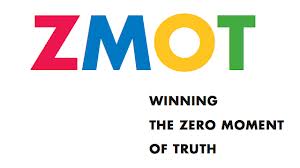With constant access to a growing list of channels and devices, today’s connected customers are no longer satisfied with vanilla, one-size-fits-all experiences and offers. To stand out in the increasingly crowded and competitive marketplace, many C-level executives from the world’s most iconic brands are not content with just “Keeping Up With the Joneses.” Instead, they are actively seeking opportunities to better understand their high-value customers across every channel and device.
The reason for this is simple: These customers are more often than not brand loyalists and willing to persuade others to become regular brand purchasers if they’re kept happy and engaged consistently in every single place they are interactive with brands. But the task of keeping brands happy and engaged beyond one big “win” isn’t easy. It requires CMOs and the entire business, for that matter, to combine their internal resources with technology that’s both powerful and agile enough to boost customer engagement and revenue long term. And a brand’s success today, in this hyperconnected and digitally dependent environment we live in, depends heavily on leveraging digital to reward high-value customers. Rather than spout out a to-do list of tactics that show high-value customers they’re appreciated, here are some specific benefits instead that can be derived from deep and sophisticated forms of segmentation:
Don’t confuse high-value customers for high-volume customers.
In the less digitally savvy days, brands and their teams of analytics “experts” would navigate through Excel spreadsheets with massive amounts of data. In those days, there was sometimes confusion and lack of knowledge as to what constitutes a high-value customer. As a result, high-volume customers would often be mistakenly categorized, and subsequently treated, as high-value customers. But the reality was, and still is today, that people who interact with a brand frequently aren’t necessarily going to be the ones that have the most value from the perspective of consistent engagement, conversions and sales across multiple channels – from being inside a physical store to making a last-minute purchase on their mobile devices or shopping from their PCs. So it was common for those brands to see a huge surge in traffic for a short burst of time, but after the excitement faded, so did the engagement and ROI.
Marketers today need to adopt a more realistic and accurate definition of value that’s based on “the combination of opportunities to convert and increase potential order value, and maximizes both, while at the same time, yields your highest value customers.” But identifying the best customers online and serving them the content they need is easier said than done. The key to obtaining a 360-degree view of high-value customers means personalizing and differentiating every message by offering an array of online content to drive maximum conversion and revenue uplifts.
To get there, the modern brands of today must, and I repeat must, push beyond the basic forms of personalization – think product recommendations or ads that chase you around on the Web. Instead, these brands are likely to be best served by leveraging the power of technology, real-time data and automated segmentation to effectively profile individuals who are in actuality high-value customers. That identification is the first hurdle that brands need to overcome. From there, it’s all about extending personalization across every device and channel to delight and please consumers with the most humanly relevant, easy-to-navigate and engaging offers.
Tap into the beauty of data to boost cross-channel ROI.
The urgency to identify high-value customers online is being fueled by a number of factors. First, the online channel represents the biggest growth opportunity for most brands. According to a new Forrester Research global eCommerce report, e-commerce revenues are going to continue to grow in 2014 as customers’ online buying habits evolve. Meanwhile, a new study released by IBM in 2014 reveals that brands stand to lose $83 billion due to poor customer experiences.
When you think about it, that’s a lot of revenue that could be left on the table if brands don’t put every segment of their customers first. For example, brands are able to gather intelligence on channels shopped — including Web, tablet, mobile phone or store — and then integrate data from a CRM system, POS, DPM or other source to help augment customer profiles. By combining intelligence on shopping history, search history and Web behavior, this combined intelligence can help brands identify when to offer an in-store promotion, extend a seasonal offer or make a product recommendation. If brands are able to identify their high-value customers, then they can scale the business more efficiently and ensure that every decision and action they make is focused on delivering the right actions defined by the right data.
Discover unique attributes of unique markets.
One common challenge that today’s brands face is a tendency to make decisions based on data points as opposed to data profiles. In these instances, it’s not that uncommon for brands to use pre-existing data models to identify their buyer personas as well as the content and offers they deliver on their websites and mobile sites.
By using automated segmentation and targeting, brands should be able to detect segments unique to their brands and industries. This process turns traditional targeting on its head because buyer profiles and offers are all determined by real-time intelligence gathered against real-time customer behavior. One example of such a data profile could be a “weekend shopper” persona. Based on their digital behavior and purchase activity, these shoppers may spend significantly more money (at multiple channels) than mid-week shoppers. So it’s more than likely these shoppers would be frustrated and intolerant of being shown irrelevant and mismatched offers that would better suit mid-week shoppers. That is where many brands today realize that even with all the benefits of technology, they have made shoppers that much less tolerant and patient with poor experiences.
Move away from campaign analysis; bring it back to the customer.
One of the ways brands have traditionally gathered intelligence on customer behaviors is through basic A/B testing of different content and offers. Building on the quantifiable value of testing, many innovative brands are now shifting from campaign-driven analysis to a more holistic and accurate customer-driven analysis. By doing so, marketers can get a more robust and humanistic view of every single customer segment, as well as being able to identify which segments are performing better than others. With businesses – across all teams – being challenged to consistently demonstrate ROI, this ability to gauge the value of high-value customers and appropriately target them with the best content on the best devices at the best times and places, is especially critical to success.











